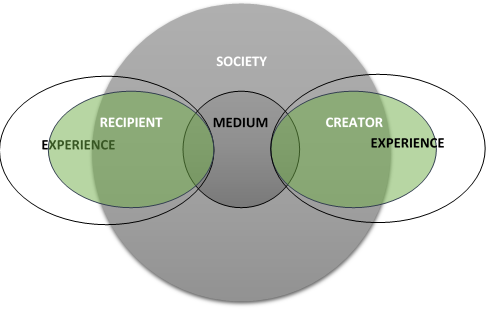In 2018, Digital Transformations established the Digital Society Bursary to support any and all creative endeavours that seek a deeper understanding of the digitised society. This year’s bursary was aimed at graduating students in Ireland who are exploring the digital society within their practice. The digital society is throwing arts, policy, education, culture and business together in ways that only an artistic sensibility can really fathom.
The 2020 award was open to students in any creative discipline (visual, performing, musical, media, technology, literature). The submissions represented all these disciplines, and each had a revealing response to a society built on digital technology.
The 2020 winners
- Nadia Armstrong (NCAD), for her video “Digital Native”.
- Ellen Holmes Kelly (NCAD), for her virtual reality photography exhibition.
- Diarmuid Farrell (NCAD), for his app prototype “Woven Chats”.
- Katie Whyte (NCAD), for her glitch art installation “Inception/Generation/Degradation”.
- Ellie Shortall (NCAD), for her video “Confessions from the Future”.
- Luke Toomey (TU Dublin), for his podcast documentary “A Terrible Beauty”.
- Tara Jay Burke (GMIT), for her interactive story “Genre Rework”
- Aoife Donnellan (TCD), for her digital interpretation of the Táin “On Material Augmentation”.
- Mingmei Hao (TCD), for her film project “Is it Apocalypse”.
- Donal Kearns (TCD), for his interactive fiction story “Mental Quest”.
Each student will receive €1000 and will have their work exhibited in the first Digital Transformations group show, the details of which will be announced shortly.
In announcing the awards, founder Scott Coombs said “while all the projects are very different, some challenging, some entertaining, all of them demonstrate how deeply these students are thinking about digitisation and its impact on human identity, the human mind and voice.” Having planned these projects long before Covid, many of the students found ways to adapt to the new circumstances that revealed new insights into what it means to collaborate, and with whom we must collaborate.
Coombs said “I’m really looking forward to showing these works to as wide an audience as possible, and letting them hear these new voices and engaging with their ideas.”
For further details and upcoming exhibition dates, see http://digitaltransformations.org/investment/digital-society-award

